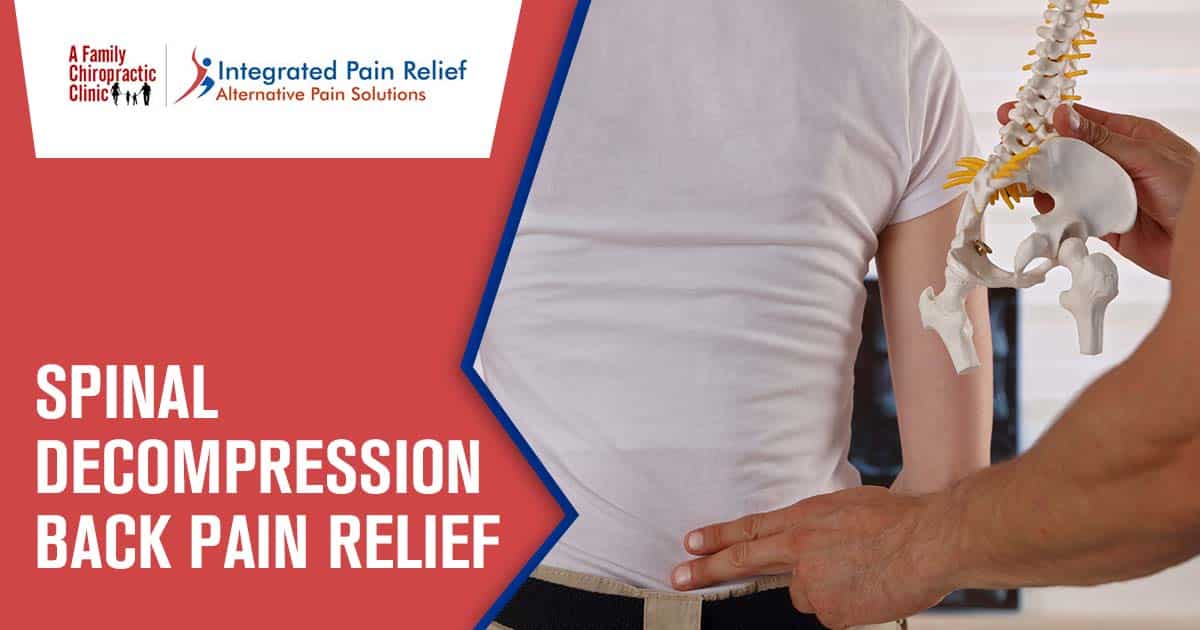One of the lessor known therapies for those struggling with back pain is spinal decompression. It helps to increase the spaces in the spine, bringing about relief to many. This therapy can help when you struggle with degenerative discs, pinched nerves, and similar back issues. It also helps those facing severe sciatica because it helps relieve leg pain as well. There are both surgical and nonsurgical spinal decompression therapies, but the nonsurgical version is showing a lot of promise without the inherent risks of surgery. It may be the best option for you.
What Is Nonsurgical Spinal Decompression?
Nonsurgical spinal decompression is a process where the spine gets stretched out, very slowly, in an attempt to relieve your back or leg pain. Typically, this is done by means of a harness or a table. The harness holds your body up and lets the weight of your legs naturally stretch out your spine. On the other hand, the table typically holds your feet and lets the natural weight of your body do the stretching. They both have a similar goal – to increase the spaces between the different components of the spine. The point is to have less pressure on the spinal components, which will help reduce or alleviate your pain.
When one gets spinal decompression, the different parts of your spine separate slightly. This can stop the pain that stems from things like a pinched nerve. It also helps when there are issues directly with the discs, such as a herniated disc or one that is slowly degenerating. You can gain up to an additional 20% of space between the discs, giving you the potential of a lot of relief. Spinal decompression therapy is one you need to have repeated. After some time, the body naturally relaxes back down into its former position.
What Risks Are Associated with Surgical Spinal Decompression?
Some people are great candidates for spinal surgical decompression. However, this is only the case for some. Typically, the risks of undergoing a surgical procedure like this offset any benefit that you would get. After surgical spinal decompression, you will be sore. Plus, your ability to move will be limited. The recovery time varies person to person, but most are not able to go back to a “normal” routine for at least 4-6 weeks. This can make the recovery time, even longer, and leave you not feeling any better than when you went in originally.
Also, you cannot determine if the surgery was a success or failure for a minimum of three months after the surgery. That is because your body is still trying to heal. So, you may go through the pain of surgery and recovery, only to not heal up properly. It simply is not worth the risk if you have nonsurgical options that can give you an equal amount of relief.
Is Nonsurgical Spinal Decompression Helpful?
Many people experience significant relief by opting for nonsurgical spinal decompression. They need to repeat the therapy to keep up with the relief, but because of how quickly they feel better, they are often more than willing to do so. The more often the therapy is done, the more relief the patient gets. Aside from the immediate effects patient’s feel after spinal decompression, they also get some long-term benefits.
One of the best reasons to consider spinal decompression is the fact that it can give your body a chance to heal. When you struggle with back pain, it can leave you unable to move as well. This can hinder how much your body can heal. Moving around keeps the muscles loose and flexible, plus helps them stay strong. When you are not able to move around, those muscles begin to atrophy. This means the sore areas are less protected, which makes healing less able to happen. When you open up those spaces, more blood can get to the injured areas. This increases how much oxygen those areas have access to, which improves healing. The more blood flow you have to those sore spots, the more likely they are to heal on their own.
Can Other Therapies Work Alongside Spinal Decompression?
Spinal decompression does a lot of good on its own. However, it is even more effective when you use other types of therapy along with it. For example, if you suffered from some type of an injury to your back, one common type of therapy is physical therapy. You can combine the benefits of spinal decompression with the benefits of physical therapy and feel even better as you heal. This helps to rebuild the strength in your back and gives you more mobility. When you have more mobility, you do not struggle with the effects of being sedentary, such as muscle atrophy. It helps you move properly to keep the muscles strong and safe during the healing process.
Another great type of therapy to combine with spinal decompression is chiropractic manipulation. This is when you go in and see a chiropractor and have them put the components of your spine back into proper alignment. When your back is out of alignment, it can leave you in a lot of pain. This can pinch nerves along your spine, and even send out incorrect signals from your spine to your brain. When your brain receives these signals, it can tell you that you are in pain, even if you really are not. You may then react by resting or staying still, even if it is not necessary. When you get chiropractic manipulation plus spinal decompression, it can help your body send the correct signals along your nerves. This can then help you understand when you are actually in pain, and when it is just a wrong message.

